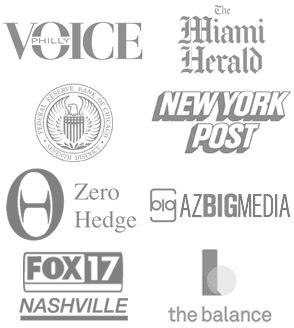The 5/5 adjustable-rate mortgage (ARM), a flexible alternative that’s seen a 20% uptick in originations this year, per Freddie Mac data. Among ARMs, the 5/5 adjustable rate loan variant stands out for its balance of predictability and adaptability. In October 2025, with 30-year fixed mortgage rates averaging 6.75% amid a stabilizing Federal Reserve policy, homebuyers are rethinking traditional loans as adjustable rate mortgages are making financial sense.
Many consumers ask us about the 5/5 ARM, and whether this adjustable rate mortgage is right for them. The RefiGuide published this article to break down its mechanics, weighs pros and cons, and shares four real-world-inspired case studies of borrowers who’ve leveraged it. As housing affordability squeezes millennials and Gen Z—median home prices hit $420,000 nationally—a 5/5 ARM mortgage offers a strategic entry point, but with caveats in an era of economic flux.
How the 5 Year ARM Works in 2025

At its core, an ARM is a home loan where the interest rate isn’t locked for the entire term but adjusts periodically based on market conditions.
A 5/5 ARM specifies two key intervals: the initial fixed period of five years (the first “5”), followed by adjustments every five years thereafter (the second “5”).
The 5/5 ARM differs from more common 5/1 ARMs, which reset annually after the initial period, offering less frequent volatility.
Here’s the nuts and bolts: During the first five years, your rate is fixed—say, 6.25% in today’s market—yielding stable payments.
After year five, the rate recalculates using an index (like the Secured Overnight Financing Rate, or SOFR, replacing LIBOR in 2023) plus a lender’s margin (typically 2-3%). For example, if SOFR is 5.5% and your margin is 2.75%, your new rate becomes 8.25%. Caps limit hikes: lifetime (e.g., 5% over initial), periodic (2% per adjustment), and initial (2% at first reset) to shield borrowers.
Payments include principal, interest, taxes, and insurance (PITI), but ARMs often start lower than fixed-rate loans, easing entry. In 2025, conforming 5/5 ARMs max at $806,500, or $1.2 million in high-cost areas, with credit scores as low as 620 qualifying. Closing costs mirror fixed loans (2-5%), but no prepayment penalties are standard. Unlike hybrid ARMs with interest-only phases, 5/5s amortize from day one, building equity steadily.
This structure suits short- to medium-term homeowners, like those in transient job markets or expecting rate drops. Bank of America notes 5/5 ARMs appeal to 30% of adjustable seekers for their “infrequent adjustments,” reducing budgeting stress. Yet, as mortgage rates fluctuate—projected to hover 6-7% through 2026 per Fannie Mae—understanding resets is crucial.
Pros and Cons of the 5/5 ARM Mortgage: Weighing the Trade-Offs
The allure of a 5/5 ARM lies in its initial affordability.
5/5/ ARM Pros include lower starting rates (often 0.5-1% below fixed, at 7.11% average in September 2025), slashing monthly payments by $100-200 on a $300,000 loan. This can qualify buyers for larger loans—up to 10% more house—ideal for upscale markets. If rates fall (as in 2020’s pandemic dip), payments could decrease at resets, saving thousands long-term. Flexibility shines for refinancers: Many convert to fixed post-initial period. Navy Federal highlights its appeal for military families relocating every few years.
5/5 ARM Cons, however, loom large. Rate hikes—capped but cumulative—can inflate payments by 20-30% at resets, straining budgets if inflation persists. Uncertainty breeds anxiety; a 2025 CNBC survey found 45% of ARM holders stress over future jumps. Not all qualify—strong credit (680+) and reserves (6 months PITI) are key—and negative amortization risks lurk if payments don’t cover interest. In rising-rate environments like 2022-2023, ARMs defaulted 15% higher than fixed, per Urban Institute. Experts like LoanDepot advise: “ARMs suit those with financial buffers or exit strategies.” Compare the 3/1 and 5/1 ARM loans.
Compared to a 30-year fixed at 6.75%, a 5/5 ARM saves $150 monthly initially but could cost $300 more post-reset if rates hit 8%. Tools like Bankrate’s calculator help model scenarios, emphasizing hybrid appeal for educated borrowers.
Case Study 1: The Urban Professional Flip (Alex, 32, San Francisco) Alex, a tech marketer, eyed a $800,000 condo in 2024 amid Bay Area frenzy. Fixed rates at 7% priced him out, but a 5/5 ARM at 6.25% (via RBFCU) dropped payments to $4,200 monthly, qualifying him for the full amount. He planned a three-year reno-resale. By 2027, post-first reset, rates dipped to 6%, saving $200 monthly. Sold for $950,000 profit: $120,000 after costs. “The ARM was my accelerator,” Alex says. Lesson: Ideal for short holds in appreciating markets, per AMRES luxury case parallels.
Case Study 2: The Relocating Family Bridge (Maria and Tom, 38/40, Austin) Relocating from Chicago for Tom’s job, this couple snagged a $450,000 suburban home in 2025. With dual incomes but moving costs, a fixed loan strained their DTI at 42%. A Sunward 5/5 ARM at 6.75% cut payments to $2,600, versus $2,900 fixed. They anticipated mortgage refinancing in four years once settled. At reset, rates held steady, but equity growth ($50,000) enabled a cash-out refi to fixed at 6.5%. “It bridged our transition without dipping into savings,” Maria shares. Echoing Reddit first-timers, it buffered relocation risks.
Case Study 3: The Rate-Optimistic Investor (Raj, 45, Miami) Raj, a real estate investor, financed a $600,000 rental in 2024 betting on Fed cuts. His 5/5 ARM from Elements Financial started at 5.75%, yielding $3,000 monthly rents covering $2,800 PITI. Post-reset in 2029, rates rose to 7.75% amid inflation, hiking payments to $3,400—still cash-flow positive but tighter. He refinanced to fixed, netting 8% ROI over five years. “Volatility tested me, but initial savings funded upgrades,” Raj reflects. HSH’s hypothetical mirrors this: ARMs thrive for income properties with buffers.
Case Study 4: The Unexpected Long-Haul (Lena, 29, Denver) First-time buyer Lena grabbed a $350,000 starter home in 2025, opting for a 5/5 ARM at 6.5% to afford granite counters over basics. Payments: $1,900 versus $2,100 fixed. Life intervened—a promotion, then family—extending her stay. At 2030 reset, rates climbed to 8%, bumping payments $250. She weathered it with raises, later refi-ing at 6.25%. “I underestimated roots, but the ARM bought time,” she says. MassMutual’s pros/cons align: Lower entry aids newbies, but planning is key.
When a 5/5 Adjustable Rate Mortgage Makes Sense
A 5/5 ARM fits if you plan a 3-7 year horizon, have rising income, or bet on rate declines (analysts forecast 6% by 2027). Avoid if risk-averse or long-term settled. Consult lenders for personalized math—caps and indexes vary.
In 2025’s market, the 5/5 ARM democratizes homeownership, blending affordability with foresight. As one Reddit user quipped, “It’s not for everyone, but for the right fit, it’s a game-changer.” Weigh your path wisely; the right loan builds wealth, not worry.
FAQs
Can you do a 5-year ARM then refinance?
Yes, many borrowers choose a 5-year ARM (adjustable-rate mortgage) with the intention of refinancing before the initial fixed-rate period ends. This strategy allows them to benefit from the lower introductory interest rate and potentially refinance into a fixed-rate loan later. However, refinancing depends on future credit, equity, and market rates. If interest rates rise or your financial situation changes, refinancing may be harder or more expensive, so careful planning and backup strategies are essential.
What credit score do you need for a 5-year ARM mortgage?
Most lenders require a minimum credit score of 620 for a 5-year ARM, similar to conventional loan standards. However, to qualify for the most competitive rates, a score of 680–700 or higher is often preferred. Borrowers with lower scores may still be approved but could face higher interest rates or stricter terms. Lenders also consider income stability, debt-to-income ratio, and property type, so maintaining a strong overall financial profile improves approval chances and loan options.
Is a 5-year ARM a good idea?
A 5-year ARM can be a smart choice if you plan to sell or refinance within the first five years, as it usually offers a lower introductory rate than fixed mortgages. This can save significant money in the short term. However, once the fixed period ends, rates adjust and may increase substantially, raising payments. It’s best for borrowers with stable finances, short-term housing plans, or those confident they can refinance before adjustments occur. Risk tolerance is key.
